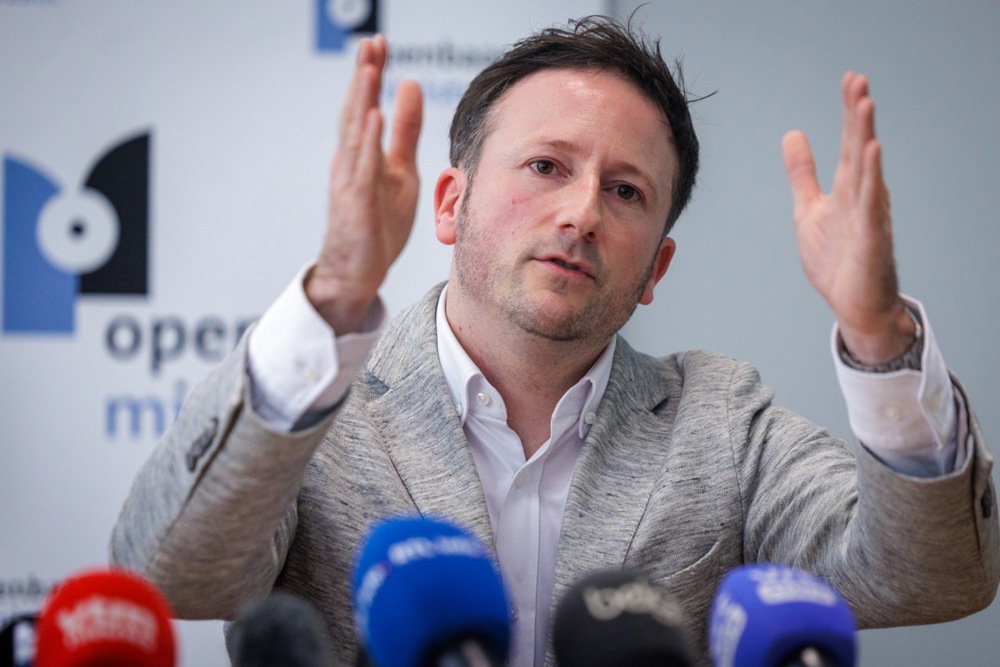An investigation has accused the debt-ridden Capital Region of Brussels of unlawful using €250 million of EU funds meant for the metro expansion into debt servicing.
However, both the alleged perpetrator as the alleged victim categorically denied the accusations. S&P, the rating agency alleged misled, also didn’t see much wrong.
According to a report by news outlet Brussels Times, the Brussels Region allegedly diverted hundreds of millions of European Union funds to fill the gaps in their own failing budget, as the region is mired in a political and economic crisis, lacking a functioning government for over a year.
The Brussels Debt Agency, responsible for managing public debt, reportedly funneled €175 million in loans from the European Investment Bank (EIB) and €75 million from the Council of Europe Development Bank into general treasury operations. These funds, strictly earmarked for transport infrastructure, were instead used to cover daily expenses and manage existing debts.
This reportedly was done to “mislead credit rating agencies” and would constitute outright fraud.
According to the news outlet, “the Debt Agency now counts on €1 billion in bank credit and €250 million in drawn EU loans as well as €825 million in yet-undrawn EU loans to support its day-to-day cash needs through 2025.”
“That’s over €2 billion in readily available cash, all unlocked on the premise that the EU loans could legally be used for day-to-day treasury operations.”
It added that “the EIB – the largest provider of the loans underpinning this financial pyramid – firmly rejects that interpretation”.
Brussels Signal reached out to the European Investment Bank, where it was indicated the initial reaction they gave on the allegations served as background.
The spokesperson said that the reporting did not reflect the conversation they had with the news outlet. He explained in detail how the loans were granted to the Capital Region, stressing that in the eyes of the EIB, there was no fraud or scandal.
“The Brussels-Capital Region has signed two loans with the EIB to carry out certain clearly defined investments related to the sustainability of the public transport system, with the second loan being entirely allocated to the implementation of the first phase of the Metro 3 project.
‘The EIB includes control mechanisms in its contracts, such as regular reporting obligations, to ensure that the project is carried out as agreed between the Bank and the borrowing party. This is also subject to ex-post verification.
“We have no indication that the Brussels-Capital Region will not carry out the investments as agreed in the contract.”
When contacted by The Brussels Times ahead of publication, outgoing Finance Minister Sven Gatz reportedly stated, “I’m not a technocrat,” and referred “all technical questions” to the Brussels Debt Agency, headed by Director Serge Dupont.
Several experts in Belgium reacted to the article when it was published, saying it was inappropriate, fraud and cooking of the books.
However, in the Brussels Parliament on July 10, Gatz, when asked by MPs from all political sides, took a different tone, and substantively refuted the accusations.
“These are serious allegations that are not true. The European Investment Bank itself requested a correction of its quotes,” Gatz told the plenary.
“We are bound by contractual obligations and cannot just do whatever we want with that money. In any case, it is not true that we would have strengthened our cash position with it.”
Gatz stressed that the Brussels Capital Region always worked on a contractual basis via the Debt Agency and never directly with third parties.
“It is important to stress that no euro in this line of credit has been used for other projects or to finance debt reduction. All expenditure was carried out in full compliance with the contractual agreements”, he insisted.
He said he had demanded a right of reply to the Brussels Times, to refute their allegations, but said they didn’t grant it to him [yet].
Brussels Signal reached out to Standards and Poor’s with requests about possibly being misled, which was denied.
A spokesperson of the rating agency said they worked with public and official figures to provide an overview of the creditworthiness of governments, and stressed that their role was not to investigate fraud.
Regarding its analysis, S&P clarified that when it calculates a government’s ability to cover its debt payments over the next 12 months (known as the liquidity debt service coverage ratio), it includes all available funding already secured, whether short- or long-term.
This includes cash and liquid assets, the expected surplus or deficit after capital spending and any already contracted loans that will help cover future costs.
This method is standard practice, not unique to Brussels. The goal is to give a realistic picture of whether a government has enough liquidity to meet its debt obligations in the year ahead.
It was also noted that Brussels had a one notch downgrade, from A+ to A, not 4 notches, as was written in the original article.
S&P’s outlook was negative though this doesn’t always mean a downgrade. Only one in three negative outlooks have led to downgrades.
In their report on Brussels, seen by Brussels Signal, the spending on the subway line and extension on the tramway network was explicitly mentioned, in line with the numbers the EIB gave.
Brussels Signal also reached out to the author of the initial piece and the Brussels Times, but did not receive a reply at the time of publication.
The Belgian capital Brussels has remained the country’s most expensive region for real estate but concerns over illegal drug activity have driven sharp local price differences. https://t.co/H18Vh7KMMk
— Brussels Signal (@brusselssignal) May 2, 2025





